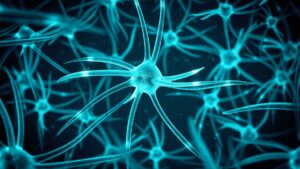
Smiling mature mother and adult daughter on sofa in living room talking and drinking tea or coffee. Family time together. Bonding and relations between generations
Imagine chatting over coffee with your grandmother when she pauses mid-sentence and mutters, “Oh, what’s the word I’m looking for?” That familiar snag, known to scientists as word-finding difficulty (WFD), often arrives long before gray hair or reading glasses. While it can feel trivial, it quietly hints at how the brain ages.
These hesitations appear everywhere, from grocery aisles to family reunions, and even slip into laboratory tasks designed to stress-test language. Far from being a mere annoyance, a faltering word can help clinicians spot trouble brewing in memory networks years before other symptoms emerge.
Understanding Word-Finding Difficulty
Early research at the University of Toronto and Baycrest Health Sciences ties WFD to the same neural pathways that falter in Alzheimer’s disease. Researchers note that slower speech, rather than the occasional lapse, tracks most closely with overall cognitive health.
Beyond disease, fresh evidence links verbal fluency to longevity; adults who maintain a steady flow of words tend to live longer than peers whose speech becomes hesitant. Because everyday conversation is complex, scientists break the puzzle into manageable pieces. Clues come from spontaneous pauses like “um,” “uh,” and those frustrating “tip-of-the-tongue” moments when meaning is clear but the sound won’t surface.
Three Theories of Word-Finding Difficulty
One theory blames a global slowdown. The processing speed theory suggests that an aging brain resembles an old laptop that needs a moment to open each file. Neural transmissions still fire, just more leisurely, leading to extra silence before the right syllable appears.
Another perspective, the inhibition deficit hypothesis, argues that older adults struggle to suppress irrelevant thoughts. Competing names or ideas intrude, and mental traffic control can’t wave them aside quickly. Yet real-world conversations rarely show a flood of wrong guesses, casting doubt on inhibition as the chief culprit.
A third explanation focuses directly on language. The transmission deficit hypothesis views vocabulary as a layered web: concept at the top, word form in the middle, and sound at the bottom. Age loosens the link between the middle and bottom tiers, so the speaker knows the concept but can’t launch its sound. This fragile connection makes spoken naming harder than listening or reading, which rely on sturdier routes.
Research Insights: The Picture-Word Game
To investigate these ideas, scientists use picture-word interference tasks. Volunteers see a picture – say, a dog – while a word flashes or plays. If that word is “cat,” its meaning overlaps and slows the answer. If it is “fog,” the shared consonant kick-starts articulation. This setup teases apart semantic and phonological forces without the messiness of free conversation.
Moving experiments online has boosted participation. Researchers turned the task into a fast-paced game, keeping attention high across all ages. Reaction times shrink into the millisecond range, revealing hiccups long before a listener hears any stumble.
What 125 Volunteers Revealed
In one study, 125 adults aged 18 to 85 tackled the game, logged executive-function scores, and recorded natural chat for later analysis. Older participants slowed markedly when “cat” accompanied a dog image and enjoyed less help from a “fog” cue. Those patterns matched the weakened pathway predicted by the transmission deficit hypothesis.
“Overall reaction time – the raw speed of pulling any word – stood out as the best indicator,” researchers noted.
This finding nudged attention back toward general processing speed as a critical factor in cognitive health.
Implications for Early Detection
Follow-up work confirmed that the cadence of ordinary talk mirrors cognitive vitality. The University of Toronto team found that people who spoke more slowly also scored lower on tasks requiring planning and focus, even when word-finding errors were rare. Crucially, pauses to chase a lost word did not track with decline; what mattered was how briskly sentences rolled once the right words appeared.
This distinction eases common worries. A brief hunt for a noun may simply reflect normal aging, whereas a gradual slowdown in fluent speech could wave a red flag earlier than memory tests. Clinicians now argue that talking speed should be part of standard cognitive checkups, alongside blood pressure and reflex taps.
Looking Ahead
The picture-word game offers a quick, engaging way to capture subtle shifts before they tip into impairment. Because it measures speed and accuracy together, it may outshine traditional naming lists for spotting risk early. Speech-analysis software, already parsing recordings for millisecond pauses, could soon alert physicians when a patient’s verbal tempo drifts.
Meanwhile, everyday habits still matter. Conversational practice, storytelling, word games, and even learning new languages keep those neural pathways exercised. Just as daily walks support the heart, lively chatter supports the mind. And when a loved one stalls on a name, patience helps more than finishing the thought for them. Sometimes the right word arrives on its own schedule – one more reminder that brains, like conversations, thrive when given a little time to breathe.
The full study was published in the journal Aging, Neuropsychology, and Cognition.





